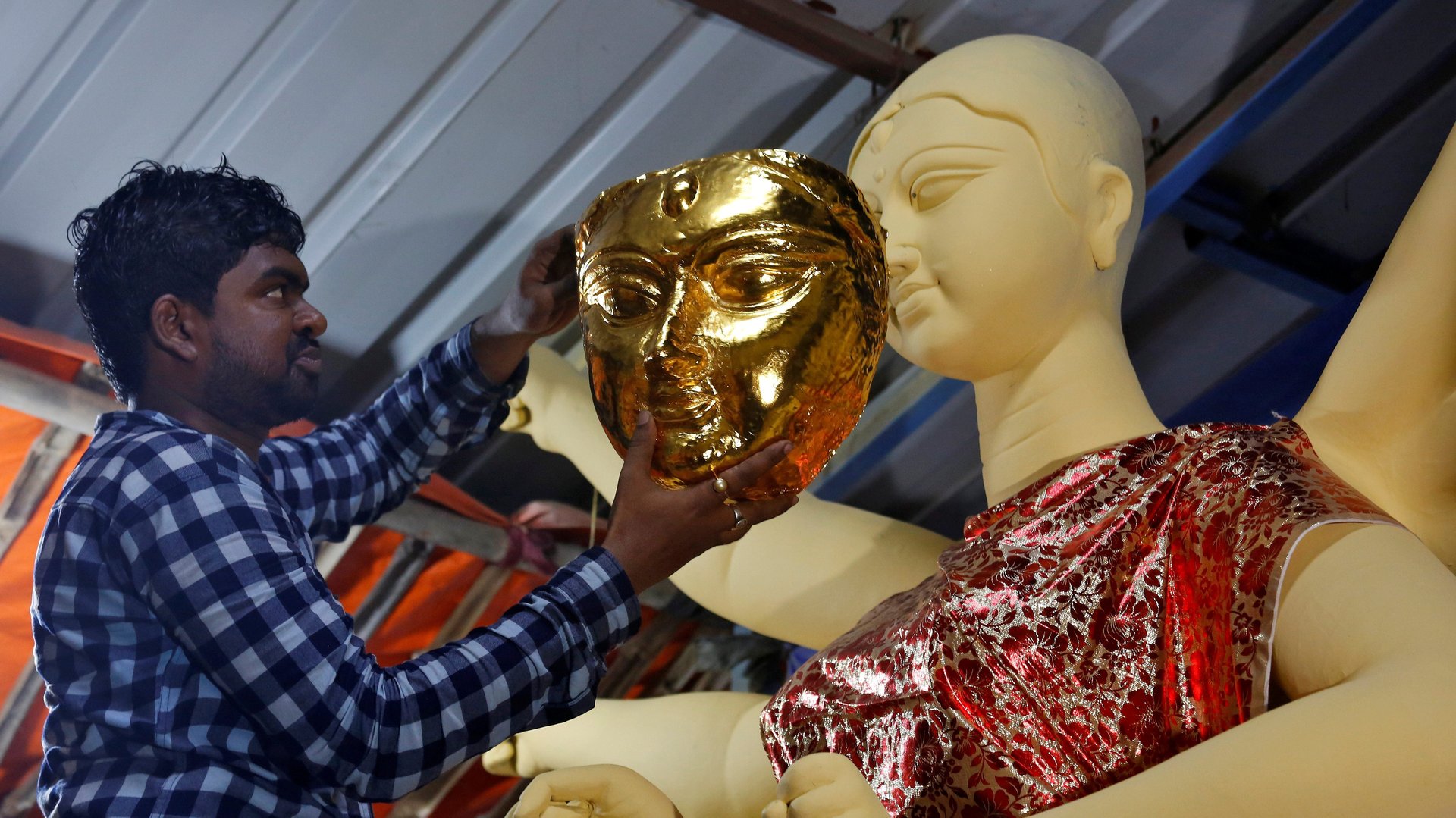Distressed Indian households have pledged $8.5 billion in gold for loans
Retail loans increased modestly in the last 12 months. But one type of personal loan—often an indicator of household financial distress—has boomed.


Retail loans increased modestly in the last 12 months. But one type of personal loan—often an indicator of household financial distress—has boomed.
Gold loans soared by 66% in August from a year earlier to 62,926 crore rupees (629 billion rupees or $8.47 billion), according to data by the Reserve Bank of India on Sept. 30. These types of loans can indicate increased financial distress among Indian households, especially low-income families. Such loans are usually the last resort for retail borrowers as it means offering up a treasured family asset as collateral. The data covers commercial banks but excludes loans made by other types of firms focused on gold financing.
The World Gold Council estimated in 2017 that Indian households own some 24,000 metric tons of gold, a $1.5 trillion hoard at today’s prices, largely made up of jewelry that families inherit or are gifted at weddings.
Gold loans now account for nearly 2.1% of personal lending, up from 1.2% in August 2019, according to RBI data. But there are signs the boom in gold lending appears to be slowing.
Why did India’s gold loans increase?
With businesses shut, jobs lost and salaries slashed after the pandemic began last year, many households likely sought to pledge their gold to borrow money to meet essential expenditure as well as emergency medical requirements. Struggling small business may also have tried to raise funds this way.
Meanwhile the uncertainty around the Covid-19 pandemic and risk aversion made gold loans a preferred route for lenders. These loans usually involve lending up to a specific portion of the value of the gold pledged, and the lender can sell the gold at auction in case of nonpayment.
The increase in gold loans in the year to August was even higher than the 42% increase in gold loans recorded in August 2020 from a year earlier.
“For banks, gold loans are the safest option because the resale value, if the loan is not repaid, is higher than any other collateral,” said a bank employee from Union Bank of India. “Banks are in need of business and people want cash…the focus is on retail borrowers.”
Some private sector banks boosted the number of branches offering gold loans in rural India, where money lenders remain the norm. A lower interest rate on gold loans was another attraction for borrowers after the RBI slashed rates during the pandemic.
On the flip side, if borrowers fail to repay the loan, the gold is auctioned away by the financial institutions, and the family loses perhaps their only real asset. Many newspapers have carried full-page advertisements for the auction of gold jewelry by leading financial institutions offering credit against gold. The Mint financial publication reported in August that gold finance firm Manappuram Finance auctioned 1,500 crore rupees of gold from April to June 2021, an over threefold surge from the previous quarter.
But gold loans appear to be stabilizing. While these loans grew sharply from September to March 2021, they grew by 3.6% from April to August, the first five months of the current financial year, compared with 13% in the same period last year.
Are gold sales recovering this Diwali?
The demand for gold typically peaks in India ahead of the festive season that begins in October. But last year, amid a shutdown and high prices, gold jewelry sales fell to a 25-year low. This year, a drop in prices has seen sales return.
In August, the prices of gold fell to their lowest level in four months of $1,677.9 per ounce, off highs from around $1,900 earlier this year. To boost gold sales, jewelers in India have resorted to selling online and in installments, after the pandemic disrupted in-person sales and prompted them to reassess traditional ways of doing business.
Analysts believe that the pick-up in gold demand may be helped along due to expectations of economic recovery across the world.
“In the wake of higher vaccinations and easing of lockdowns, economic activity has started to recover. In turn, gold retail demand is set to make its own recovery during Diwali this year,” said Mukesh Kumar, senior analyst at the World Gold Council India said.
Nearly 30% of urban Indians plan to spend more on buying gold in the next three months than they did last year, according to a survey conducted by global market research firm YouGov in August. The company’s Diwali Spending Index—an indicator of the spending intent among Indian consumers—jumped to 90.71 this year, compared with 80.96 in the previous year.